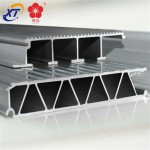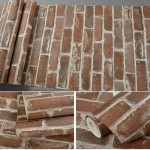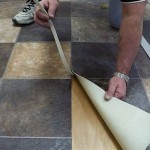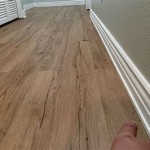Wide Hardwood Flooring Vs. Narrow: A Comprehensive Comparison
Hardwood flooring remains a consistently popular choice for homeowners due to its aesthetic appeal, durability, and potential to increase property value. However, within the realm of hardwood flooring, numerous choices exist, including the width of the planks themselves. The decision between wide and narrow plank hardwood flooring involves considerations that extend beyond personal preference, influencing the perceived size of a room, the overall style, and even the installation process. This article provides a detailed comparison of wide hardwood flooring and narrow hardwood flooring, exploring their features, benefits, and drawbacks to assist in making informed decisions.
Aesthetic Considerations: Influencing Room Perception and Style
The most immediate and noticeable difference between wide and narrow plank hardwood flooring lies in their aesthetic impact. Wide planks, typically measuring 5 inches or more in width, can create a more open and expansive feel in a room. Their larger surface area showcases the natural grain patterns of the wood more prominently, contributing to a sense of luxury and visual interest. This can be especially beneficial in smaller spaces, making the room feel less cramped by reducing the number of visible seams and lines.
Conversely, narrow plank hardwood flooring, generally measuring less than 3 inches in width, offers a more traditional and formal appearance. The greater number of seams between planks adds visual texture and can contribute to a busy or patterned look. This can be particularly well-suited for larger rooms, where the increased visual complexity provides a sense of warmth and intimacy. The repetitive nature of narrow planks can also create a sense of linear flow within a space, guiding the eye along the length of the floor.
Style-wise, wide planks often align with contemporary and rustic designs. They complement open-concept layouts and minimalist aesthetics, providing a grounding element that balances clean lines and modern furnishings. The larger surface area of each plank allows for more dramatic variations in color and grain, often seen in reclaimed or distressed wood flooring, further enhancing the rustic appeal.
Narrow planks, on the other hand, are frequently associated with more traditional and formal styles. They are commonly found in historic homes and period-inspired interiors, lending a classic touch. The more uniform appearance of narrow planks can also be suitable for transitional designs, bridging the gap between traditional and modern aesthetics.
Structural Stability and Environmental Factors
Beyond aesthetics, the width of hardwood planks impacts their structural stability and susceptibility to changes in humidity and temperature. All wood expands and contracts in response to environmental fluctuations. Wide planks, due to their larger surface area, are more prone to cupping, crowning, and gapping than narrow planks.
Cupping refers to the edges of a plank rising higher than its center, while crowning describes the opposite effect, with the center of the plank rising above its edges. Gapping occurs when spaces develop between planks. These issues are primarily related to moisture content changes within the wood. When the humidity is high, the wood absorbs moisture and expands. When the humidity is low, the wood releases moisture and contracts.
Consequently, proper acclimation of wide plank hardwood flooring before installation is crucial. Acclimation involves allowing the wood to adjust to the ambient temperature and humidity levels of the installation environment for a sufficient period, typically several days to weeks. This helps minimize the potential for excessive expansion or contraction after installation.
In locations with significant seasonal variations in humidity, engineered hardwood flooring is often preferred over solid hardwood, particularly for wide planks. Engineered hardwood consists of multiple layers of wood bonded together, with the top layer being a veneer of the desired hardwood species. This multi-layered construction provides greater dimensional stability, reducing the likelihood of warping or movement due to moisture changes.
Narrow planks, with their smaller surface area, are generally less susceptible to these problems. While acclimation is still recommended, the potential for significant movement is reduced. This makes narrow plank flooring a more forgiving option in environments where humidity control is challenging or where solid hardwood is preferred.
The subfloor also plays a crucial role in the stability of hardwood flooring, regardless of the plank width. A level and stable subfloor is essential to prevent unevenness and movement, which can exacerbate problems related to expansion and contraction. Proper subfloor preparation, including leveling and ensuring adequate moisture control, is a critical step in any hardwood flooring installation.
Installation Considerations: Complexity and Cost
The installation process for wide and narrow plank hardwood flooring differs in terms of complexity and cost. Generally, installing wide plank flooring requires more skill and attention to detail due to its increased susceptibility to environmental factors and the need for precise alignment. The larger planks can be more difficult to handle and maneuver, particularly in confined spaces.
The increased risk of cupping, crowning, and gapping with wide planks necessitates careful planning and execution. A professional installer with experience in handling wide plank flooring is highly recommended. They will have the expertise to properly acclimate the wood, assess the subfloor, and employ appropriate installation techniques to minimize potential problems.
Furthermore, wide planks often require additional fasteners, such as nails or screws, to ensure secure attachment to the subfloor. This adds to the material cost and labor time. The use of adhesives may also be necessary, particularly with engineered wide plank flooring, to provide additional stability and prevent movement.
Narrow plank flooring, on the other hand, is generally considered easier to install. The smaller size and weight of the planks make them more manageable. The greater number of seams also allows for more flexibility in accommodating minor imperfections in the subfloor. While professional installation is always recommended for optimal results, homeowners with some DIY experience may be able to tackle a narrow plank flooring installation project.
The cost of installation also differs between wide and narrow plank flooring. Due to the increased complexity and labor involved in installing wide planks, the installation cost is typically higher. This difference can be significant, particularly for large areas or complex layouts. However, the material cost of the flooring itself can also vary depending on the species, grade, and finish of the wood. Therefore, it is important to obtain detailed quotes from multiple installers and suppliers to accurately compare the total cost of each option.
The underlayment used beneath the hardwood flooring also contributes to both cost and installation complexity. A high-quality underlayment can provide additional sound insulation, moisture protection, and cushioning, improving the overall performance and longevity of the flooring. The choice of underlayment should be tailored to the specific type of flooring and the subfloor conditions.
Ultimately, the choice between wide and narrow plank hardwood flooring depends on a combination of factors, including aesthetic preferences, budgetary constraints, environmental considerations, and installation skill levels. By carefully weighing these factors and seeking professional advice, homeowners can make an informed decision that results in a beautiful and durable hardwood floor that enhances their home for years to come.

Wide Or Narrow Wood Flooring Direct

Wide Plank Vs Narrow Auten Wideplank Flooring

Narrow Or Wide Wood Planks Direct Flooring Blog

Narrow V S Wide Hardwood Planks Which One Is Ideal For Your Flooring Project Castle Bespoke

Narrow Or Wide Wood Planks Direct Flooring Blog

Wide Plank Vs Narrow Auten Wideplank Flooring

Standard Narrow Or Wide Solid Wood Flooring Jg Solihull

Wide Plank Vs Narrow Hardwood Flooring In Colorado

Wide Vs Narrow Planks Of Flooring Ambience Hardwood

Wide Plank Hardwood Flooring Vs Narrow Which Is Best For You District Floor Depot
Related Posts








